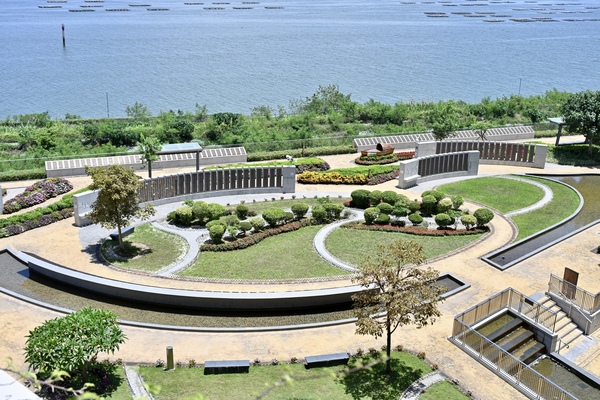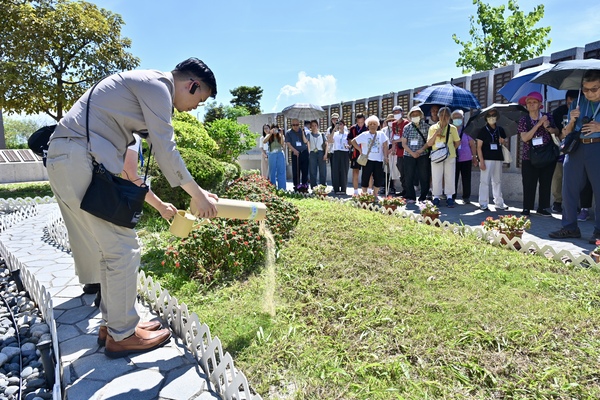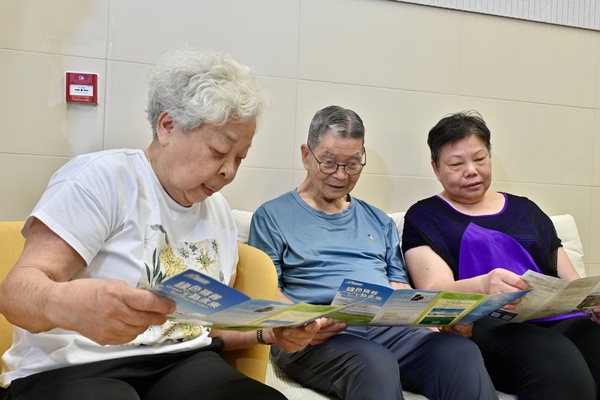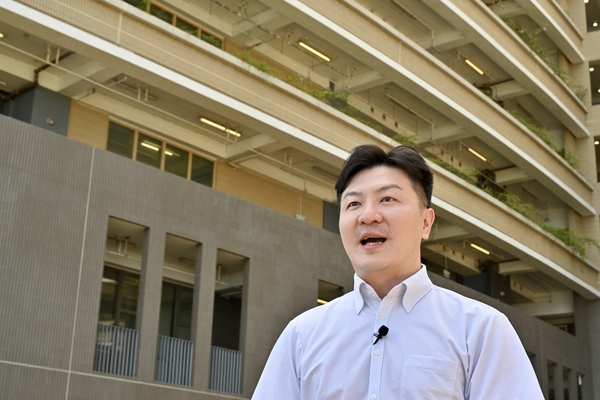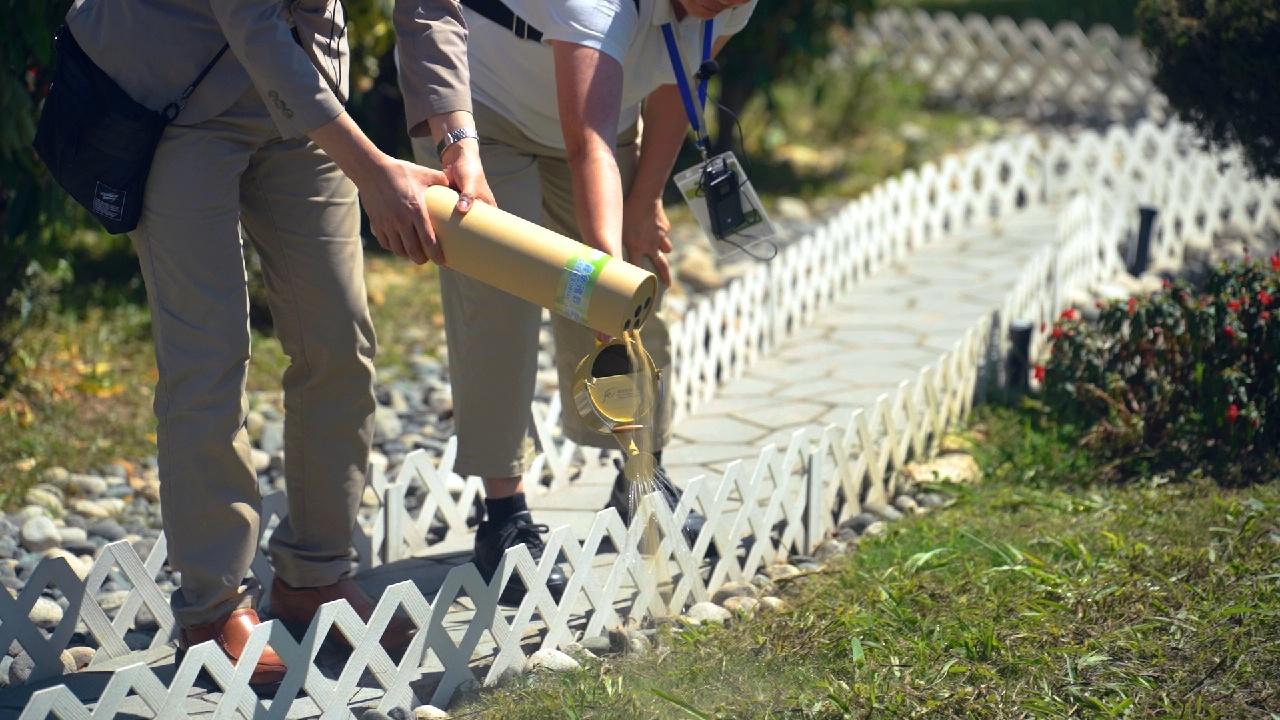Embracing greener final farewells
The desire to return to nature is one shared by many, not least when it comes to post-funeral arrangements. Tapping into a growing trend, the Food & Environmental Hygiene Department (FEHD) has in recent years stepped up efforts to promote green burials, where remains are returned directly to the earth, or scattered at sea.
The department’s endeavours include organising tours of facilities such as the Tsang Tsui Columbarium & Garden of Remembrance in Tuen Mun. On one such tour recently, elderly participants shared their thoughts on green burials as an eco-friendly end-of-life choice.
Besides explore the facility and its services, the visit gave them the chance to reflect on their approach to life’s final journey. In fact, several remarked that they had already received the full support of their families in their wish for a green burial.
Tranquil setting
Visiting the Garden of Remembrance for the first time, 82-year-old Lee Yuk-sim described its seaside setting as open and tranquil. “The sound of waves lifts my spirits,” she said.
Ms Lee wishes to have her ashes scattered along the garden’s pebble path, however. Despite her love for the ocean, following a heart-to-heart conversation with her daughters she decided scattering at sea was not an option for her.
“I once told my daughters, ‘I love the sea.’ They replied, ‘The sea is full of swimmers, and every time we pass by it, we will think of you, and we don’t want that.’ Then they said, ‘The Garden of Remembrance is different. It is about dust returning to dust, earth to earth.”
Meanwhile, 87-year-old Choi Sau-ling, also on her first visit to the Garden of Remembrance, found it strikingly different from what she had expected.
“There were rumours that stray dogs and cats might disturb the ashes, but that is a complete misconception,” she said. “The truth is that the Garden of Remembrance is absolutely beautiful, with a sea view.”
Ms Choi highlighted that the garden’s peaceful atmosphere makes it both an ideal resting place and a convenient site for families to pay their respects.
“It is breezy and uncrowded, like wandering in a garden,” she commented. “It hits differently. Without the need to burn incense or make extra preparations, the experience feels lighter for everyone.”
Dignified farewell
Cheng Ting-fai, 87, had already made trips to the Gardens of Remembrance in Diamond Hill and Cape Collinson before visiting Tsang Tsui. He said he had also spoken to his children about his wish to have his ashes scattered.
“Placing ashes in an urn is almost like trapping them. There is no sense of freedom, and over time no-one may be around to look after them.”
Mr Cheng described scattering ashes in a Garden of Remembrance as a better option. “The ashes can bask in the sunshine, and experience the changing weather,” he explained.
He also expressed his hope that all 18 districts in Hong Kong can have a Garden of Remembrance. “Born here, raised here, and laid to rest here. How wonderful is that?”
At present, those choosing green burials can have their ashes scattered at either of three designated maritime areas or in one of the Gardens of Remembrance.
The department manages 13 Gardens of Remembrance, with Tsang Tsui being the largest. The site also features a ceremonial hall where simple memorial services can be held before the scattering of ashes.
The garden’s layout includes a boat-shaped wooden artwork, helping to create a symbolic space of transition. Visitors are invited to inscribe dedication cards with heartfelt messages, giving their loved ones a dignified farewell.
Meanwhile, a fourteenth garden – the Shek Mun Columbarium & Garden of Remembrance – is expected to open for use in the third quarter of this year.
Growing trend
Moving away from traditional funeral customs is no easy transition, but – thanks in no small part to the Government’s promotional efforts – green burial, as a sustainable means of handling ashes, has been gaining wider acceptance in society.
FEHD Senior Health Inspector Alan Li said that, as of the end of May, more than 15,800 names were registered in the Green Burial Central Register.
“About 70% of deceased registrants had their ashes disposed of in the form of green burial. Even if there is no prior registration, descendants can still adopt green burial for the deceased.”
The department stated that green burials accounted for a record-high 18.2% of disposals last year, with 8,522 individuals’ remains being scattered in Gardens of Remembrance and 1,032 at sea.
To enhance the sea burial experience, the FEHD has upgraded its free ferry service, available every Saturday, by introducing a new vessel design.
Public education
Meanwhile, in August of last year the department launched a large-scale “School of Life” programme that explores life’s closing chapters and sustainable options for being laid to rest.
The programme includes a “Life & Death Expo”, showcasing support services for ageing and end-of-life planning, as well as community walking tours that encourage reflection on life’s transitions. These initiatives have attracted around 5,000 participants so far, and people of all ages are welcome to take part.
The department also arranges green burial talks, guided tours to Gardens of Remembrance, and community tours, with these activities engaging more than 20,000 citizens to date.
FEHD Chief Health Inspector Daniel Lam said the department will continue to enhance green burial facilities, promote advance planning for after-death arrangements through the “School of Life” programme, and strengthen public education and publicity, in order to gradually establish green burial as the common practice for handling ashes.
